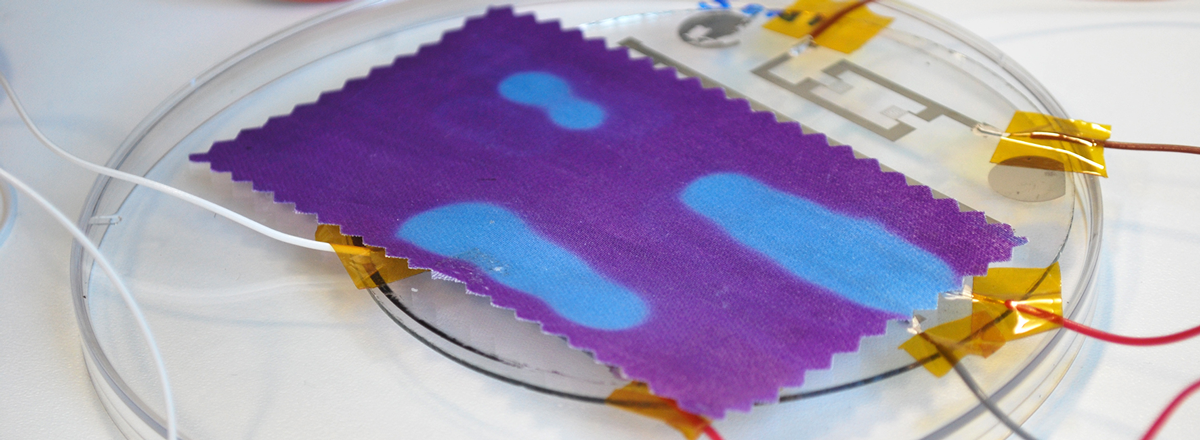The post this week introduces the content of parts of Chapter 6 of my PhD thesis, an investigation into the untapped potential in using photovoltaics to power heating mechanisms that in turn activate thermochromic dyes (indirect solar energy).
Indirect activation is defined as activation of the thermochromic dyes using electrical heating mechanisms that are powered by solar cells (photovoltaic), thus using the sun as a renewable energy source to power the solar cells. In principle, this gives the designer the potential to use a power supply that is not only more sustainable, but also controllable. This high-technology solution was investigated as a future possible activation method for applications using thermochormic dyes. There have been several design concepts published in the literature that use electronics to activate the thermochromics, but they are not powered by built in renewable energy solutions. These investigations were conducted using high-technology heating mechanisms, based on systems constructed using both flexible and rigid photovoltaics, as well as glass wafers containing parallel connected electrical microheaters, developed specifically for the investigation using state of the art technology.
Evidence of the successful proof of concept was provided based on the result that colour change was observed in textile samples printed with thermochormic leuco dyes. Resulting in that photovoltaics may be used successfully as an energy source to power the heaters to activate thermochromic dyes within textiles. The possible applications that the research described in this chapter addresses are primarily sun-screening textiles, where sunlight shines directly on the textile. However the indirect activation approach could also apply to textiles that are not exposed to direct sunlight. The indirect activation method applies either when solar cells are integrated in the textile or when the solar cells are mounted separately to the textile. The work within this chapter covers both of these potential scenarios. Due to the absence of previous research within this area, the research carried out as described within this section of the thesis started from a fundamental level, involving photovoltaics that have been mounted separately to the textile rather than integrated into the textile.
To read more about how to use photovoltaics to power thermochromics see Chapter 6 in my PhD thesis Thermochromic textiles and sunlight activating systems: an alternative means to induce colour change. Click here to download
To read an overview of the whole thesis project, click here.


